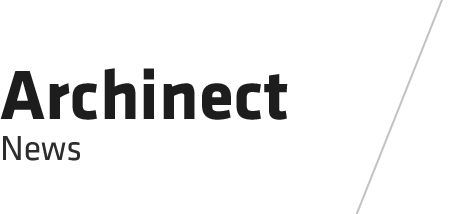
In an effort to represent the toll plastic waste has on the environment, a group of undergraduate architecture students from the Pratt Institute have constructed a series of inflatable structures that put into physical form the research they say simultaneously demonstrates the potential for its reduction and reuse as a building material.
The project was completed through Pratt’s d.r.a. Lab, which is overseen by professors Duks Koschitz and Robert Lee Brackett III. Together with their instructors, the 5-person team worked to test out different techniques useful in the development of walls, tubes, and domes that can be used in a variety of self-supporting structures. The students were then able to install the structures outside of Pratt’s library in order to display the distinctive role of each design.
The first design, titled “Super Maxi” organized a network of portals into a unique viewing platform that offers different vantage points of campus (as well as a critique of single-use plastics in hygiene products). The next design, “The Plastic Confusion”, offered a pleated meditation on the good and bad of plastics as they relate to society.
They were preceded on the library site by a tent-like inflatable called “The Pop-Up Drop Off.” The cantilevered design doubles as a collection center for reusables thanks to a series of pockets built into the sheets of the structure. Finally, inside nearby Higgins Hall, the last project (titled “The Wrapped Bubble” in reference to the commonly-used packing material) invites users to become engulfed in the installation, giving them a sense of what it feels like to be shipped while also making a statement about the ways in which plastics use is consuming the planet.

All four projects are meant to provoke a conversation about plastics use that the students say mandates a reimagining throughout the design profession the world around. America in particular has maintained a dubious position in terms of its own production of plastic waste, and the project’s designers are equally optimistic this status can be reworked over time using their installation as a guide.
“Plastic has undoubtedly changed the course of our world and through our project, we are examining the duality of plastic, both the good and bad side,” Alan Weng, BArch ’23 said. “It is a constant battle as plastic is often misleading. It can be so easy to use yet so hard to discard. And it is the interstitial space that needs to be dissected—the way we ultimately balance plastic use and plastic waste.”
No Comments
Block this user
Are you sure you want to block this user and hide all related comments throughout the site?
Archinect
This is your first comment on Archinect. Your comment will be visible once approved.